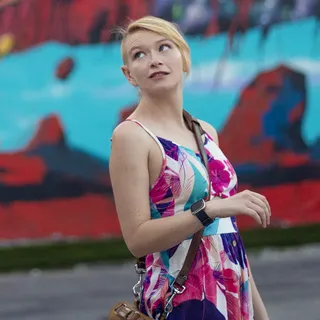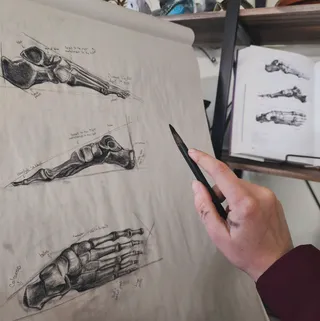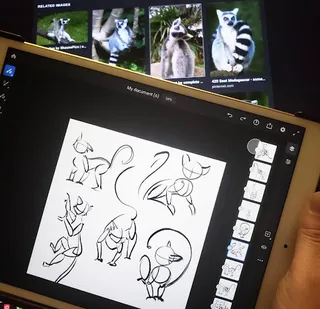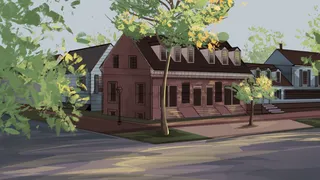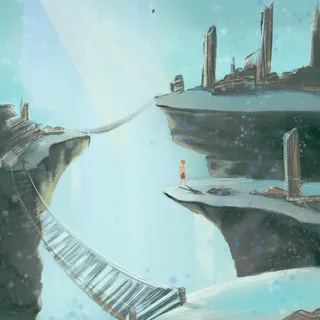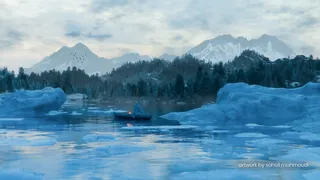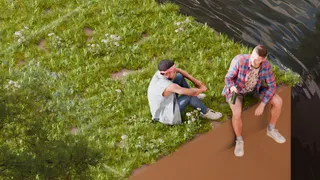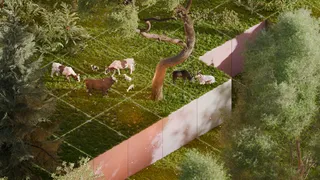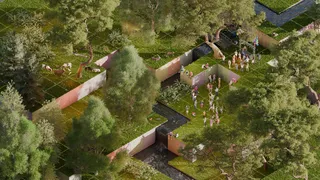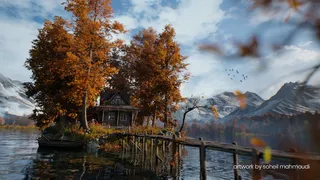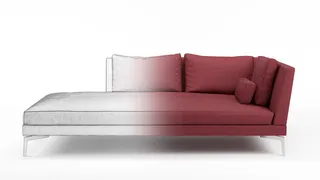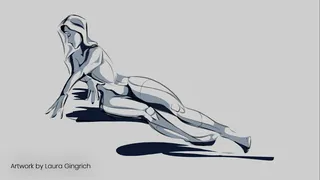
Laura Gingrich is a news editor, 3D storyboard artist, and an upcoming animation director. Through years of experience in the industry, she developed a unique workflow to tell stories. In the interview, she reflects on different stages in her career, methods, process, and offers valuable advice for emerging 3D artists.
Hi Laura, would you like to tell us a bit about yourself?
I was born in Berkeley, in the San Francisco Bay Area. Nonetheless, I consider Los Angeles to be more of a home. This is where I studied, and made my way up the ladder of commercial production. Today I live in Washington, DC.
Diving into live action was a lot of fun. After moving to DC, I worked as a documentarian for a non-profit and then got an opportunity to work at a news organization. The 24-hour news cycle was intense, and I was producing a show two to three times a week. Without hardly ever sleeping, I was hitting one deadline after the other.
Nowadays, I work remotely as a news editor, which is a very technical and passive job. Thanks to that, I have the mental space to tackle figure drawing and writing while developing my 3D skill set. What I'm truly passionate about is telling stories.
What was your Blender journey like?
I started where everyone else starts, with the donut. Blender is such a diverse program and can open so many niches to explore. I chose to focus on 3D storyboarding and previs. I'm like a miniature director on my own projects.
The funny thing about animation is how incredibly deliberate it is. In comparison with documentaries, animation is on the opposite end of the spectrum. Documentaries unfold as you are capturing them, and the best you can do is try to put your camera in the best place at the best time. In animation, it’s all about setting up intention. I love this aspect, but unless you have a clear vision, it’s easy to get stuck in development because of the endless possibilities.
Can 3D storyboarding help the animation workflow?
Yes, investing in previs is simply wonderful. You can figure out what's working and what's not and decide what's in the frame ahead of time. It also helps to get all of your departments on the same page and make sure they work together under a shared vision. It streamlines the overall process.
How would you describe your workflow?
I start with an idea and then turn it into a script. I prefer working with other people on dialogues. I find it very engaging to bounce back and forth. I'll usually talk to someone, explain what needs to happen in the story, and jump into the conversation part. Talking with people gives me energy, and I enjoy it a lot.
Next, I move to character design. I’ll do a list of characters and try to establish what they look like from different angles. It shouldn't matter all that much how consistent and accurate the character is because what you're trying to do is to convey an idea.
The goal is to make the storyboard aesthetically appealing. What this entails is changing since the industry is changing. There is currently a conflict within the storyboard community. As a result of people like me entering the scene, traditional storyboard artists are put under pressure to study 3D. It’s not enough to be an illustrator anymore, and you have to expand your skill set. The problem is that despite the new demands, the rate didn’t get higher, at least not so far.
How is BlenderKit useful for you?
BlenderKit is instrumental for me as a storyboard artist. When I’m working for a director, I’m not hired to model, let’s say, a castle, but to visualize a story involving the castle. BlenderKit makes it very easy because it’s integrated into Blender, and all I have to do is search and download assets. At this point in the pipeline, the director doesn’t care too much about the final assets for the previsualization, and it would be inefficient to spend time building out a castle. What I need is to throw ideas onto the digital canvas, and BlenderKit helps me to do it quickly.
After I download the assets, I strip the materials and add an outline. I do it for stylistic consistency, so it will look better with my 2D character sketches. I draw characters because it’s faster than modeling them. It takes me about six minutes to draw a person making an expression in a particular pose, and it would take much more to model, rig, and pose. Some may find it surprising, but I actually learned to sketch to speed up my 3D workflow.
Your new project called Brave New Tech is a brilliant satirical comedy. What is it about?
Brave New Tech is an animated short telling the very real story of Eli Whitney, who invented the cotton gin under the impression that it would eliminate slavery. He wanted to make the industry so efficient that people would stop importing slaves. Unfortunately, his invention ended up making things worse.
I see a lot of these little parallels of how emerging technology can be very exciting but can also create massive social problems. The whole thing is a metaphor for AI and the disturbing questions it raises. Humor is a fantastic way to deal with touchy subjects.
In general, I’m now focused on creating shorts. I try to divide my life into semesters, as if I was still in school, and do projects I can accomplish in one semester. Completing a project is one of the most underrated skills. When you have finished projects in your portfolio, people can recognize the potential and start investing in you.
The 3D industry is still extremely male-dominated. Why do you think that’s the case?
There are many reasons for that. Historically, it was a technical hurdle to get into 3D. Whether it’s by nature or nurture, those who’d identified as male were statistically more likely to work with computers, troubleshooting, and programming the backend. They tend to navigate more towards technical professions, while, in my experience, women are socialized to gravitate towards positions involving caring for others.
When it comes to directing, you have to be very confident. It takes chutzpah. Again, I don’t know if it’s by nature or nurture, but male-identified people seem less likely to be afraid of using their voice to make subjective decisions and of being annoying when doing that.
There is a great book called Invisible Women, and it speaks about how society is built not necessarily for men, but for unburdened salary earners. For example, it looks at how sidewalks are built not for caretakers assisting elderly or children, but for these salary-earners to walk one by one to the office. The same goes for medicine—doctors learn almost exclusively about the male body and sometimes forget that 50% of the population will show very different symptoms for various medical conditions.
What was your experience like as a woman in the industry?
Overall, I’ve had great experiences with a number of workplaces, sometimes more women, sometimes more men, but always a place of learning. Most people are generous, kind, and gracious, curious about the world and excited to make things.
I was never told that I can’t do something because I’m a woman, but I have been in jobs with predatory men in positions of power. Nothing illegal, but men who knew exactly where the line was and walked right up to it. And I was not in a financial position to walk away. You look at what you can control. And then you focus on getting out. And you will. You have to remember that it’s not normal, you don’t have to put up with it, and you deserve to find something better.
I think that female-identified people have an easier time getting noticed and a harder time being taken seriously. It’s great when you can find support from others in the community. In BCON 2024, Marion Stalke organized a meetup for women and non-binary people. We were about 10% of the people attending the conference, and it was lovely to discuss our projects together.
Do you have any more suggestions for emerging 3D artists?
I would say it’s valuable to have a specialization in mind, especially for networking. During the early part of my career, I would do literally anything. It helped me to have consistent employment, but I wish I would have been more vocal about my intentions and deliberate about carving a specific path.
Also, it's always good to remember that you can absolutely make money in the creative industries. At the end of the day, they're an industry just like any other. If your heart's in it and you are ready to work hard, I promise you it’s possible.
You have an opportunity to live beyond death; make an impact on the world. That’s why I do what I do, because I'm going to die.
